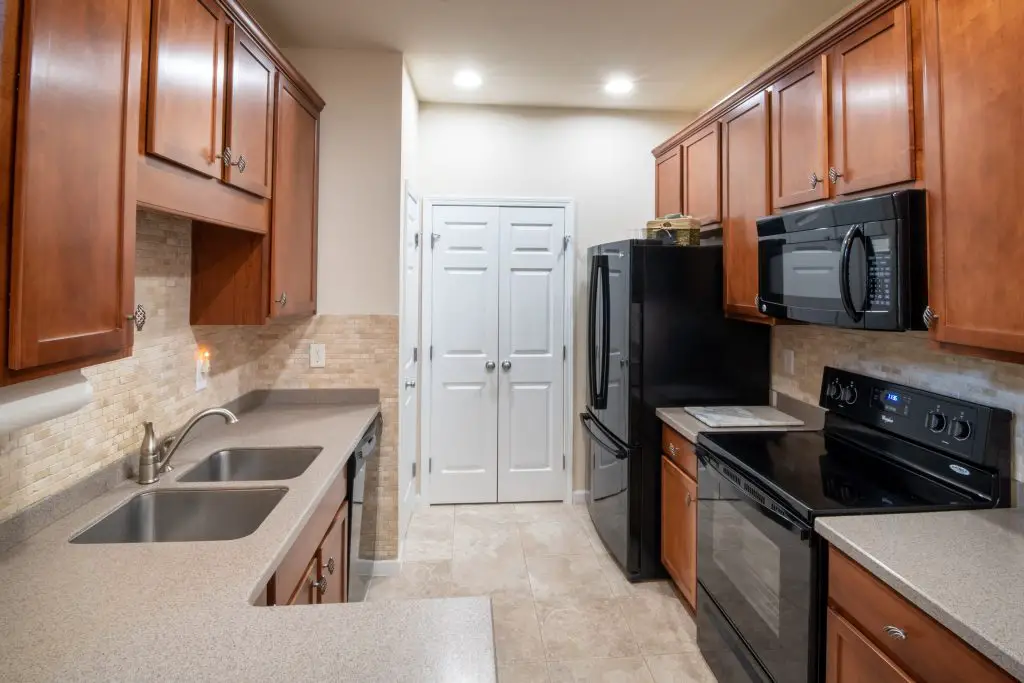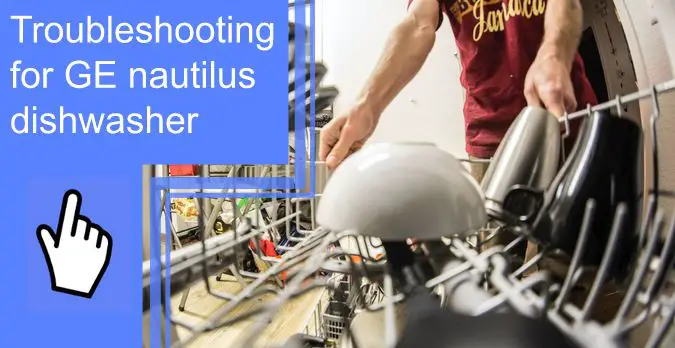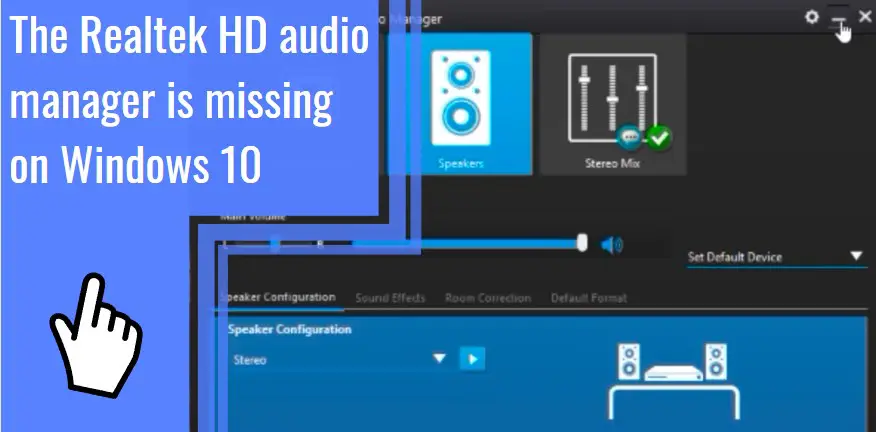What you find on this page:
One of the conveniences that we most often take for granted is a working dishwasher. Not having to wash, rinse, and dry each dish manually saves us hours of time and effort weekly. But what do you do if your dishwasher breaks?
If you’ve been looking for help with any GE Nautilus dishwasher troubleshooting, we’re here to help. Read on for a quick guide on troubleshooting, diagnosing, and repairing problems with your GE Nautilus dishwasher.
GE Nautilus Dishwasher Troubleshooting & Repair
Your dishwasher might feel simple, but they’re complex machines. There are plenty of reasons why it could need repairs and why troubleshooting is necessary.
The first thing you should do is figure out what precisely the issue is. Is your dishwasher failing to drain water? Are you having difficulty getting it to turn on at all? Can you tell if there’s power running to the dishwasher or if it seems powerless?
Discovering the exact issue can help you figure out where to start with your troubleshooting. It can also help you realize whether you need professional repairs or minor maintenance that you can easily do at home.
What to Do if a GE Nautilus Dishwasher Is Not Draining?
One of the most common issues you’ll deal with is your GE Nautilus dishwasher not draining. After washing your dishes, the water will remain pooled in the bottom of the dishwasher.
The pooled water causes several issues. Primarily, it’s difficult to use the dishwasher again as the pooled water can overflow when more is added. It also remains dirty, making your dishes dirty when you run the washer again.
In many cases, the water can also have a foul smell after sitting for a while. Food and other scraps from your dishes will remain in the water depending on how dirty the dishes are.
If the dishwasher isn’t draining, the first thing to do is check the drain. You might have something blocking it, especially if you frequently wash dishes that weren’t rinsed first.
You also may have a clog in the draining hose. Consider using a dishwasher-safe drain cleaner to wash away whatever might be clogging the drain.
Past these two fixes, it’s difficult to get to the issue without removing the dishwasher. You might be better off calling a professional repair service to make sure that you don’t accidentally damage the dishwasher during your efforts.

Why Is There Standing Water After the Dishwasher Has Completed Its Cycle?
The most common cause of standing water remaining after the dishwasher has completed its cycle is that something is clogging your drain. Food particles or any other debris are usually the reason for this.
You may also have accidentally put something that shouldn’t be in the dishwasher. A straw wrapper, bits of plastic, or other small items like that can easily become mixed in with your dishes. Check the drain and remove anything that might be in the way.
Why Is My GE Dishwasher Not Filling With Water?
Most often, the reason for this issue is that there’s something wrong with the water supply. Your main water valve likely isn’t delivering water properly. If this is the case, check the main water valve and ensure that nothing is cutting it off.
You also might have something blocking the hose in the same way that the drain is often blocked. Check the hose and make sure no food or debris is blocking it.
Another common issue is that calcium deposits have built up over the water supply. Some areas, such as cities with hard water, deal with this more frequently. It usually won’t happen in a short period, as calcium takes a while to build up. Clean the valve several times monthly to ensure no minerals are building up!

Dishes Not Getting Clean Left With Gritty Residue. Could the Filter Be Backed; If So, How Do I Fix It?
Yes, the most common cause of this is the filter is dirty! The filter is in charge of cycling your water and cleaning out the grit. If the filter is dirty or backed up, it’s only going to spray your dishes with that dirty water.
The best way to fix this is to clean your filter. You can remove your dishwasher filter and soak it in clean water. Hot, soapy water is best at removing grit and debris. Leave it to soak for an hour, then scrub it with a clean brush.
If the issue continues, you may need to replace the filter completely. Putting in a fresh, clean filter can ensure that your filter isn’t having problems.
Troubleshooting a motorshaft seal in a GE nautilus dishwasher
If you are experiencing a loss of water or poor dishwashing performance, it is important to first check the seals inside the dishwasher motor shaft. This is done by removing the bottom panel of the dishwasher and accessing the seal by pressing on it from the inside.
If it is not properly seated or if there is damage to the seal, water will not be able to flow freely through the system, and your dishes may not come out clean.
Troubleshooting GE nautilus dishwasher overflow
Check the water level. Make sure the water is at the proper level and not too hot or cold. Overflowing dishwashers can cause drainage problems and affect other features’ operation.
Look for debris in the dishwasher. Remove any food or dirt clogging the dishwasher’s pipes or filters. This will help clear up any overflow problems.
If you notice water seeping from around the dishwasher’s seal, a leaky pipe or hose may connect it to the building’s plumbing system. Check for any broken seals or damaged pipes to determine the source of the issue.

GE nautilus dishwasher troubleshooting not usual sound
When our dishwasher stopped making the usual sound and started making a grinding noise, we knew it was time to troubleshoot.
During operation, dishwashers make some noise due to their components. However, if the noise gets strange and loud, it could indicate a technical failure such as a seized drain pump, clogged filter, or faulty fan or motor.
GE nautilus dishwasher troubleshooting guide no power
If your dishwasher is not powering up, you can try a few things before calling a technician. First, check if there is power at the dishwasher outlet by plugging in an electrical appliance that should work. If there is power at the outlet, the issue may be with the dishwasher itself.
Another possible problem could be the cable connection between the dishwasher and the electrical outlet. If you still have trouble powering up your dishwasher, you may need to call a technician for help.

Looking for a GE Dishwasher Repair Manual?
A manual should have been in the box if you purchase your dishwasher as a new appliance. However, used dishwashers may not have a manual included!
If you need a replacement manual for any reason, check GE’s website for a digital version. Looking up your model number and dishwasher can help you find the digital manual for your dishwasher.
Another option is to go to your local appliance store and see if they have an extra. Many returned models will still have the manual, and they may have a surplus.
Finally, you can search for your dishwasher’s model number and manual. Other users may have uploaded a scan of the manual for others to use. It’s one of the many benefits of living in the digital age.
Conclusion
Whatever the issue with your GE Nautilus dishwasher, troubleshooting can help you figure out the precise issue. Knowing what’s wrong will help you narrow down what you can do to fix the problem. When in doubt, contact a professional repair service to ensure that the repairs are carried out quickly, safely, and effectively.
If you’d like more home tech tips, browse the rest of our website! You should keep reading if you still have a few concerns to cover.
Frequently Asked Questions
With many appliances, you can reset them to try and cycle power. Doing so can help to smooth out any software glitches and can often fix minor issues.
For your GE nautilus dishwasher, the front panel should have a “start/reset” pad that you can use. Press this button to cycle out power if your dishwasher is receiving power.
However, you may also have issues getting the dishwasher to turn on. If this happens, you won’t be able to reset the dishwasher!
If this is your issue, you should turn off the power to the unit with your home’s circuit breaker. Leave the circuit off for half a minute to full before restoring power. Doing so will cycle power and should work as a full reset of your appliance.
One effective tool for troubleshooting is your GE dishwasher’s diagnostic tool. If it’s working properly, this tool can show you precisely what the problem is so that you can work on a fix. Doing so helps you reduce the time and effort it takes to diagnose the problem manually.
For most GE dishwashers, press and hold down the cycle and start buttons. Leave these pressed down for about five seconds.
The diagnostic test will first check whether the door is closed. If it’s open, the diagnostic tool will request that you close it to continue. If it’s closed and this error appears, you have something wrong with the sensor, which could be the root of your problem!
Yes! On most models, this button is on the front control panel. Many models have it on the same button as the “start” pad.
If the reset button is its own pad, pressing it will usually carry out the function. However, some models may require you to hold the button down. Doing so ensures you don’t accidentally reset your dishwasher when you don’t want to by accidentally pressing the button.
If the reset function shares a pad with the start pad, it usually means you need to hold the pad down to complete a reset. Consult your manual to see how to use the reset feature on your dishwasher.
The GE dishwasher not starting and blinking usually means something is preventing it from functioning as it is supposed to. Most commonly, the issue is that the door must be closed properly.
Press your door closed firmly until you hear it latch. If the problem persists, you may have something preventing it from fully closing or an issue with the sensor.
Another reason for this error is that there could be small software errors. To remedy this problem, resetting your dishwasher usually suffices.





